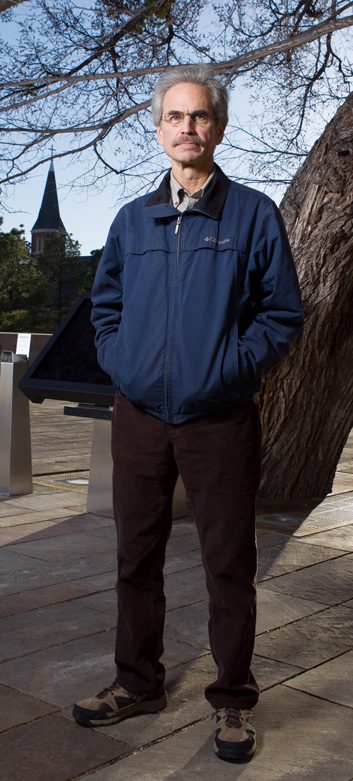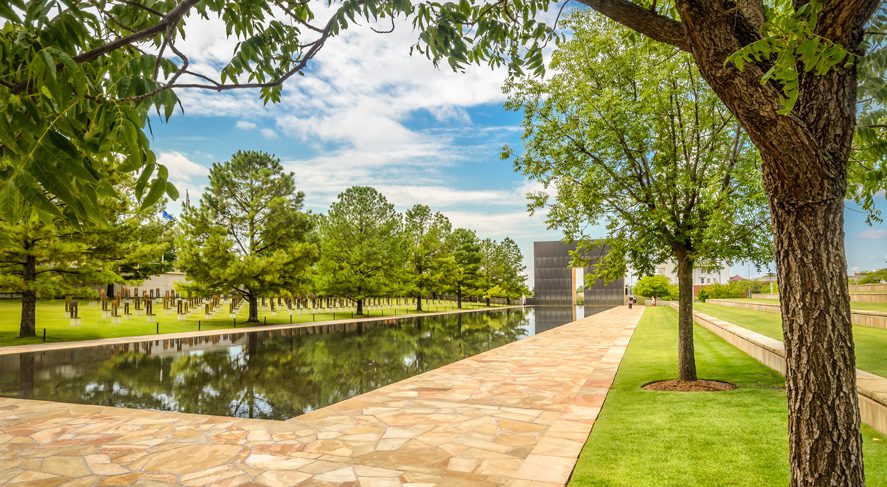About 115 feet away from where the bomb exploded on the first floor of the Murrah building, Dennis Purifoy says he thinks he survived because he was on the backside of the office with many rows of cubicles between him and the bomb. Purifoy was the assistant manager of the Social Security Administration office at the time.
[pullquote]I Was Never Tempted To Find Another Job.”[/pullquote]
“I started yelling for help after it went off, and I couldn’t figure out why no one came for me. The lights went out, and on the bottom floor, the natural light was blocked by rubble and dust. It was very dark, and the ceiling panels had come down and draped over me like a tent,” Purifoy says.

A coworker pulled him from the rubble, and it took them more than an hour to get out of the building. Purifoy says he doesn’t remember feeling much until later.
“I was on sensory overload because I know I saw things that I don’t remember. Some people remember hearing the floors collapse, but I don’t remember that. There’s only so much your mind can process. Sometimes, it was just literally about putting one foot in front of the other to keep going and keep moving,” Purifoy says.
After making it outside the building, Purifoy found a group of supervisors and leaders, and together they worked on making lists of those employees they had seen and those who were still missing. After the second bomb scare at around 10:30 a.m., Purifoy and some of his coworkers took shelter in a safety glass business, of all places.
“They had a working phone that I was able to use to call my wife. What I remember I kept telling people that day when they called to check on me was, ‘I’m alive.’ I just kept saying that,” Purifoy says.
As an office leader, the first few days and weeks were extremely busy for Purifoy. He worked with others to finalize lists of those found and missing, spent time at the First Christian Church where families waited to hear about loved ones and made sure that everyone knew about the funerals. Purifoy attended all but one funeral, which was out of state. Forty of his coworkers died in the tragedy.
“I’m not sure how anyone without a spouse could have gotten through something like that happening. She helped me in so many ways,” Purifoy says of his wife.
About a month after the bombing, with employees desperately seeking a sense of normalcy, the Social Security Administration reopened in what used to be Shepherd Mall.
“After the office opened, it was easily the hardest work I’ve ever done,” he recalls. “That went on for months and months before we were eventually fully staffed again. I was never tempted to find another job. I had worked for Social Security for more than 20 years at the time and enjoyed the work. It’s rewarding and a service that people need. The people we served also understood what we had gone through. We also handled survivor claims, so we knew we were providing a needed service. The administration gave everyone the option to transfer to another office, but most people were comfortable staying. We had a special bond.”
Purifoy says he is very proud of the way his office handled the tragedy and moved forward. He says he hopes that he is a better person today because of what happened 20 years ago.
“It’s like you hear all the time: You’re not guaranteed tomorrow. Most people theoretically agree with that, but after what we went through, it becomes a reality,” Purifoy says. “I really do appreciate the everyday joys of sunrises and sunsets and birds singing. I hope I’m more empathetic.”
Purifoy retired from the Social Security Administration in late 2013.
























